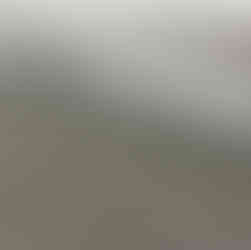
Amino Acids. Installation View. Photo Courtesy of ACME Gallery.
Amino Acids and All the Flowers
ACME
By Shana Nys Dambrot
Through May 6th
Nature is getting into trouble — and making some trouble of its own — in both a solo and a separate three-person show at ACME. The Amino Acids: Anders Brinch, Silas Inoue, John Knuth and Hadley Holliday: All the Flowers installations pair perfectly in a convergent, deconstructive whole, combining to offer the work of four artists who each have complicated and sometimes volatile relationships with the flora, fauna, chemical processes, and optical bounty of the natural world. The premise of the group show is that entropy can be harnessed as a force for the creation of beauty and abstract narrative; while Holliday dismantles certain key assumptions about the potential for the decorative to transcend prettiness.
Amino Acids, curated by Danish gallerist Marie Kirkegaard brings together the work of three impossibly diverse artists, whose stylistic differences nevertheless exist along a continuum of phenomenological painting and sculpture. Each devises a unique manner by which to choreograph the intentional and controlled decision-making of material content with the unpredictable alternative mark-making effects of the chain reactions they trigger. To wit, Brinch sinks his paintings in a lake, Inoue grows mold on wood panels, and Knuth generates imagery via the biological expulsions of living flies and also fire.
Anders Brinch’s work is by far the weirdest, with his canvas paintings both large and small depicting a folksy, Rousseau-like quasi-tropical alt-paradise which not only seems extraterrestrial but occasionally depicts aliens and their spaceships amid the sickly verdure. Silas Inoue engineers non-figurative works, which is to say abstractly expressionistic compositions in muted tones, with rounded, rough-edged shapes strewn across mottled geological surfaces. But despite being abstract these panels are also quite literal, in that the imagery is not depictive but rather self-generated by the mold the artist cultivates. It seems organic because it is in fact, an organism. John Knuth has been celebrated for his innovative use of living flies as some kind of studio assistants, feeding them non-toxic water-based mediums and positioning his canvases below their cages to catch the random splatter of their physical evacuations. This approach both excels at and wholly upends practices of all-over, brushless, and actionist abstraction.
Aside from the engaging art-historical and science-lab aspects of these frozen spectacles, there is a meta-level on which the forced cooperation of nature and culture also speaks to the current state of humanity’s relationship to the planet. The encroachments of each upon the other are enacted in these works, as biological imperatives occupy a large part of the territory typically reserved for discussion of the artists’ studio practices. Instead of, for example, analyzing the emotional quality of the imagery of holes, burns, and other distresses in the reflective, chromatic surfaces of Knuth’s heat-blanket and flare works, we contemplate the evidentiary remains of the physical action of starting a fire. Instead of Inoue’s finely detailed line-work, we examine the fractal contours of the mold-blossoms as life-forms. Instead of working out how Birch creates the fine filter wash that tints his scenes, we imagine the paintings sinking into the silt of the lake bed.
All the Flowers (by which is meant all the flowers at LACMA) represents Hadley Holliday’s year-long project to sketch the flowers in every art object on view at the museum. Her undertaking is the result of conceptual happenstance — she noticed while leading drawing classes the extreme prevalence of the floral as a motif throughout the museum’s eclectic collections across era and civilization. However her process also echoes the work of the artists in the group show, in that her very analog, inherently unpredictable Cyanotype photographic printing technique is frequently at the mercy of environmental and meteorological circumstances, and reflects these vagaries in their final forms. Optically, this spontaneity and the symphonic range of blue hues combine to give her prints a painterly sense of movement, as well as the illusion of collage-like dimensionality. By transforming art history’s most ubiquitous iconography of decorative and symbol-rich imagery into a tumultuous, gestural abstract field of pure shape, Holliday breaks mere prettiness apart into its component elements and reconfigures those into a fresh, disorienting expression of what nature looks like to the mind.
#losangeles #losangelesartist #art #painting #losangelesart #contemporaryart #SilasInoue #LosAngelesArtists #HadleyHolliday #acme #artgallery #AminoAcids #gallery #JohnKnuth #shananysdambrot #artandcake #installation #AndersBrinch #ArtandCakeLA #fineart #artists #artist #arts #installationart #sculpture #ACMEgallery #ArtandCulture #artreveiw #losangelesgallery #AlltheFlowers


















































